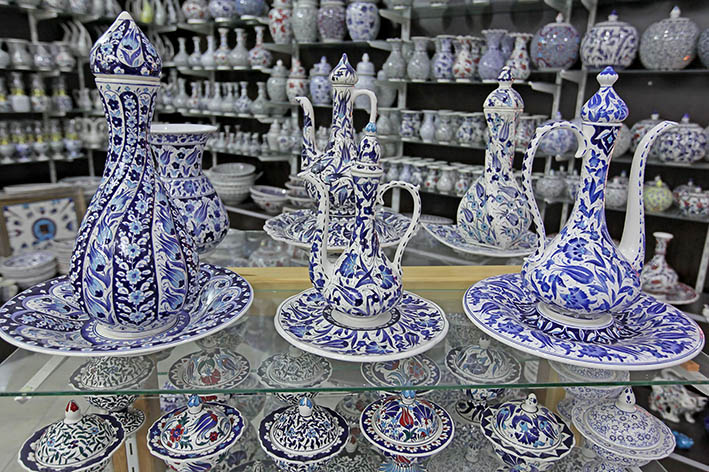Turkey has a long history about traditional craftsmanship. Traditional craftsmanship in Turkey is perhaps the most tangible manifestation of traditional Turkish handicrafts. Some of the most valuable traditional handicrafts made by traditional craftsmen.
STONEWORK
Stones which have an important place in human life have served mankind in various ways since the beginning of history. The entrance of stone into Turkish handicraft started with the arrival of Turks to Anatolia.
Decorative stonework covers a large area in Turkish ornamenting and has protected its place even though changes have occurred depending on the period it was used in. The most common motifs of stonework are; geometric plaits, inlaid work, plant figures, low high embossed animal figures and palmets.
WOODWORK
Having improved in the Anatolian Seljuk period, wood carving has its own unique characteristics and was first meant to cater for needs rather than aesthetics. Wood carving was used in architecture during the Seljuk and Beylic periods and later on during the Ottoman period it was used in both architecture and for daily objects. The trees that are used for woodwork are walnut, apple, pear, cedar, ebony and rosewood and as for ornamenting techniques like inlay, painting, kundekari, embossed carvings and lattice are used.
METALWORK
Metalwork has a very important place in our traditional handicrafts, has a long period of improvement. This improvement that starts from central Asia continues with the great Seljuk, Anatolian Seljuk and moves on to the Ottoman empire.
Copper which has a very important place in Anatolian art is a metal suitable for ornamenting. It has been used as apart of daily objects like kitchen utensils, jewelery, and helmets and as part of building like doors and door ornamenting.
Copper is the most used metal in metalwork. There are four techniques that are used in making copper utensils; pounding, moulding, turnery and milling. Copper which is currently the most processed metal has a wide span of usage as kitchen utensils with its tinning technique.
LEATHER, BONE, HORN
It is possible to classify handicrafts that are made of leather, fur, horns and bones according to the materials used and their purpose of usage.
Other types of handicrafts that can be added to this category would be; making of handmade authentic leather shoes and rawhide sandals, bookbinding, shadow show puppets, utensils and wool handicrafts.




